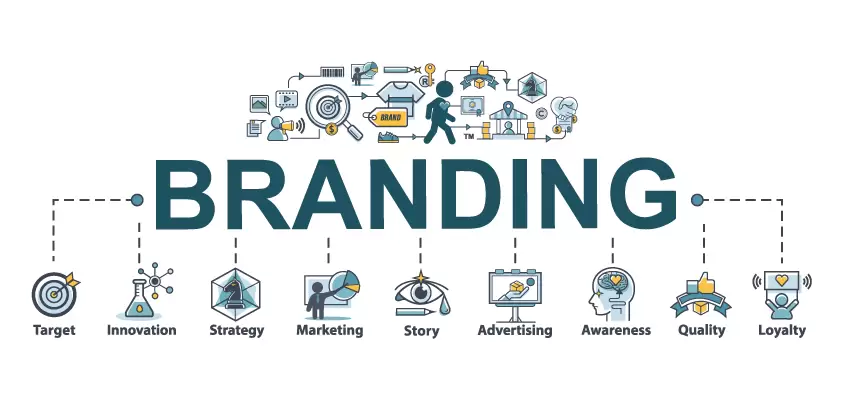
Business Branding
Business branding is a strategic process that involves creating a distinctive and memorable identity for a company, product, or service. It encompasses the visual, verbal, and experiential elements that shape how a business is perceived by its target audience. Effective branding goes beyond a logo or color scheme; it is about communicating the values, personality, and unique selling propositions that differentiate a business from its competitors.
Key Components of Business Branding:
-
Brand Identity: This includes the visual elements that represent a brand, such as logos, color palettes, typography, and design elements. Consistency in these elements helps create a recognizable and cohesive brand image.
-
Brand Messaging: Crafting a clear and compelling message that communicates the brand's values, mission, and value proposition. Brand messaging should resonate with the target audience and evoke the desired emotional response.
-
Target Audience: Understanding the demographics, psychographics, and behaviors of the target audience is essential for effective branding. Tailoring the brand to meet the preferences and needs of the audience helps build a stronger connection.
-
Brand Positioning: Defining where a brand stands in relation to its competitors in the minds of consumers. This involves highlighting unique selling points and creating a distinct space in the market.
-
Brand Voice: Establishing a consistent tone and style for all communication, whether it's in marketing materials, social media, or customer interactions. A well-defined brand voice contributes to brand personality and identity.
-
Brand Experience: Ensuring that every interaction a customer has with the brand, both online and offline, aligns with the intended brand image. Positive experiences contribute to brand loyalty and advocacy.
-
Brand Storytelling: Narrating the brand's journey, values, and achievements in a way that captivates and resonates with the audience. Compelling storytelling creates an emotional connection between the brand and its customers.
-
Brand Recognition: Striving for a strong and memorable presence in the minds of consumers. Consistency in branding elements across different touchpoints contributes to easy recognition and recall.
-
Brand Extensions: Exploring opportunities to expand the brand into related products or services while maintaining coherence with the core brand identity. This can contribute to increased brand loyalty and a broader market presence.
-
Brand Equity: The overall value and perception that a brand holds in the market. Positive brand equity is associated with customer trust, loyalty, and the ability to command premium pricing.
-
Adaptability: Recognizing the need for occasional rebranding or adjustments to the brand strategy to stay relevant in a changing market or to reflect changes in the business itself.
-
Internal Branding: Ensuring that employees understand and embody the brand values. A strong internal brand culture can positively impact external perceptions and customer experiences.
Business branding is an ongoing process that evolves with the business itself. It is a strategic investment that contributes to customer loyalty, differentiation in the market, and the overall success and sustainability of a business. Through thoughtful and consistent branding efforts, businesses can build lasting relationships with their audience and stand out in a competitive landscape.
